Malloreddus alla Campidanese Sardinian Sausage Pasta Recipe
Updated Mar 06, 2025, Published May 31, 2023
This post may contain affiliate links. Please read our disclosure policy.
Malloreddus alla Campidanese is a beloved Sardinian pasta dish with ridged, gnocchi-like pasta tossed in a rich tomato and pork sausage ragù. It’s pure comfort food from the heart of Sardinia—and as a Sardinian myself, I can say this is as authentic as it gets!
You’ll also love my stuffed lumaconi pasta, Frutti di Mare, and best meatballs ever (Italian polpette).
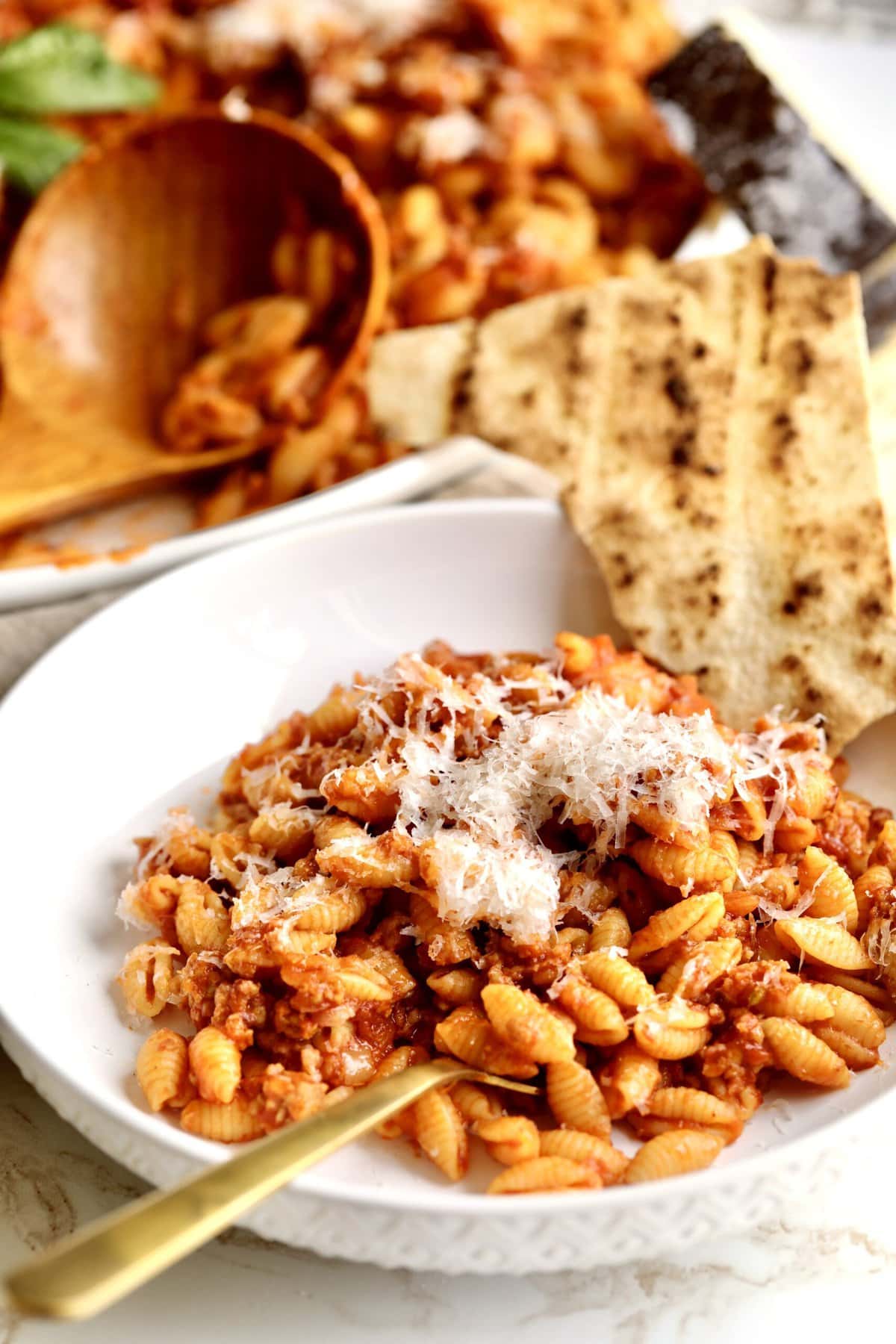
What Is Malloreddus Campidanese?
Malloreddus, also known as Sardinian gnocchetti, are one of Sardinia’s most well-known and beloved types of pasta. Among the various recipes using Sardinian gnocchetti, malloreddus alla campidanese is typical of the Campidano area. It is a wonderfully rich dish that pairs malloreddus with pecorino cheese and sausage sauce. Be sure to try my Fregola Sarda Pasta with Zucchini and Cheese, Classic Carbonara Recipe, and Amatriciana Sauce Recipe for another taste of Sardinia. For dessert, you can also pair it with Sardinian Pardulas!
Why you’ll love this family favorite!

I grew up eating this simple sausage sauce with little Sardinian gnocchi; my children love it, too! Gnocchetti Sardi are one of those beloved types of pasta specific to my region of southern Sardinia.
This special meal takes me home to the Mediterranean Sea- sharing meals with my family around a big table! I hope you love our family capidansese recipe as much as we do. Make it for special occasions, Sunday supper, or weeknight dinner. It will surely become a family favorite for you, too!
Made With AmorE,

Table of Contents
What Are The Ingredients In The Campidanese Sauce?

- Malloreddus pasta (sardinian gnocchetti): A type of small, gnocchi-like pasta traditionally used in Sardinian cuisine. It is made with semolina flour and water and has a slightly chewy texture that is great for absorbing the flavors of the pasta sauce. These are different than homemade potato gnocchi that you make and roll on a gnocchi board- although those would be great with this sauce!
- Canned tomatoes or tomato purée (passata): Form the rich, flavorful base of the sauce.
- Sardinian or Italian sausage: Spicy, coarsely ground pork sausage that adds bold, savory flavor.
- Onion: Builds depth and sweetness in the sauce.
- Extra virgin olive oil: Used for sautéing; adds richness and aroma.
- Pecorino Romano or Sardo: Sharp, salty sheep’s cheese grated over the dish. Parmesan works too.
- Salt: Essential for seasoning the sauce and pasta water.
- Fresh basil: Adds brightness and fresh herbal flavor.
- Pinch of Saffron: Adds earthy depth and golden color—steep in warm water before adding.
See recipe card for quantities.
Substitutions and Variations
- Pasta: Use cavatelli or orecchiette. Try my Orecchiette with Italian Sausage and Broccoli.
- Sausage: Sub with turkey sausage or spicy sausage.
- Saffron: Optional or swap with turmeric.
- Add Veggies: Try mushrooms or lentils. You’ll love my sausage and lentil soup.
- Spicy: Add chili flakes or Calabrian paste. If you love spicy food, make my creamy nduja pasta next time.
- Creamy: Stir in a spoonful of ricotta.
How To Make Malloreddus Alla Campidanese
Follow these step-by-step instrcutions for the most authentic recipe.
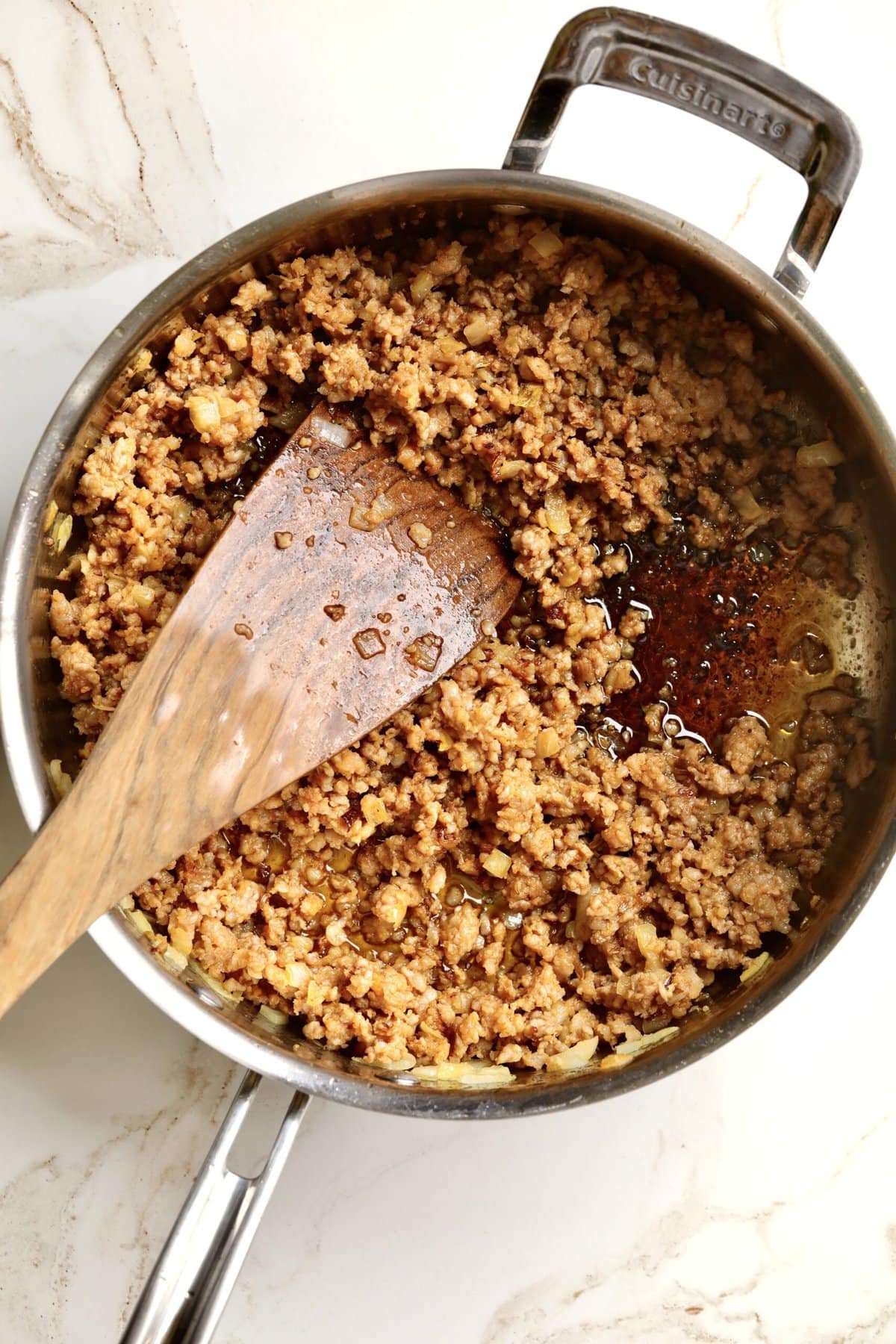
Step #1: In a large saucepan or sauté pan, on medium heat, add onion, and cook in olive oil for 1-2 minutes until translucent, then add the sausage meat and bay leaf. Cook for 10 minutes breaking up the sausage and letting it brown, stirring frequently.
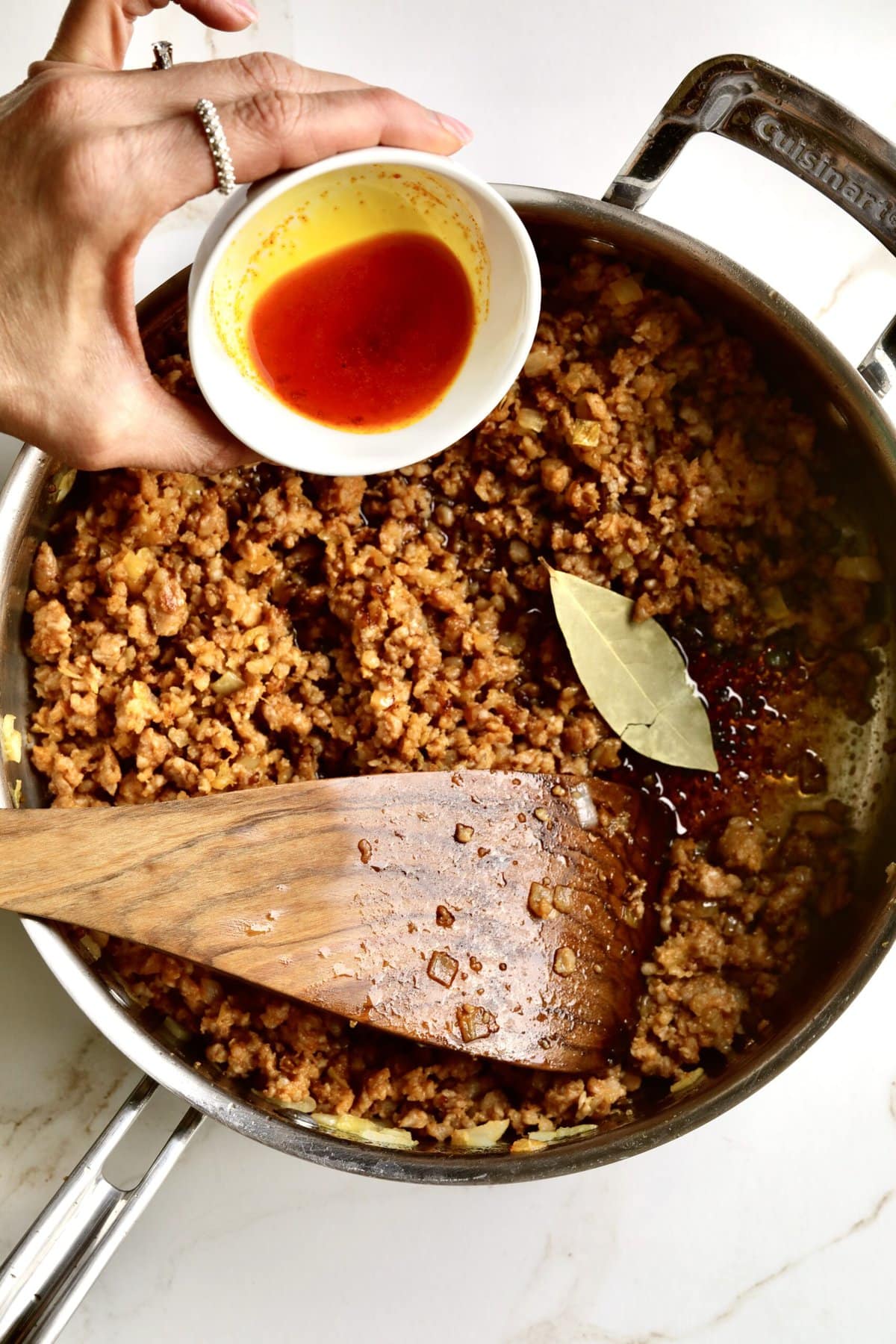
Step #2: Add prepared saffron (if using) to the sausage sauce. Reduce heat to medium-low and let simmer for about 20-25 minutes, stirring occasionally.
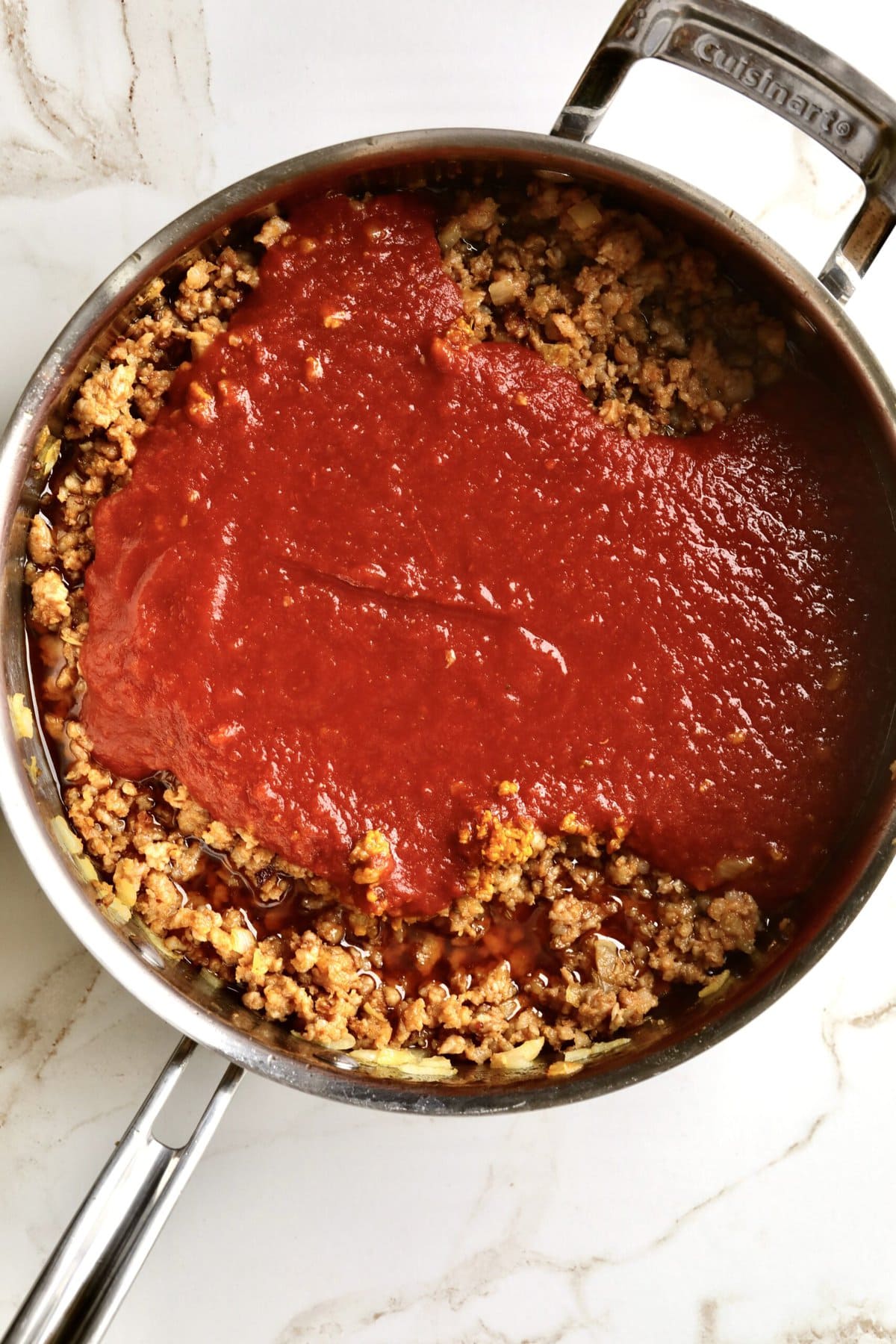
Step #3: Add the tomato puree and simmer for 20-25 minutes
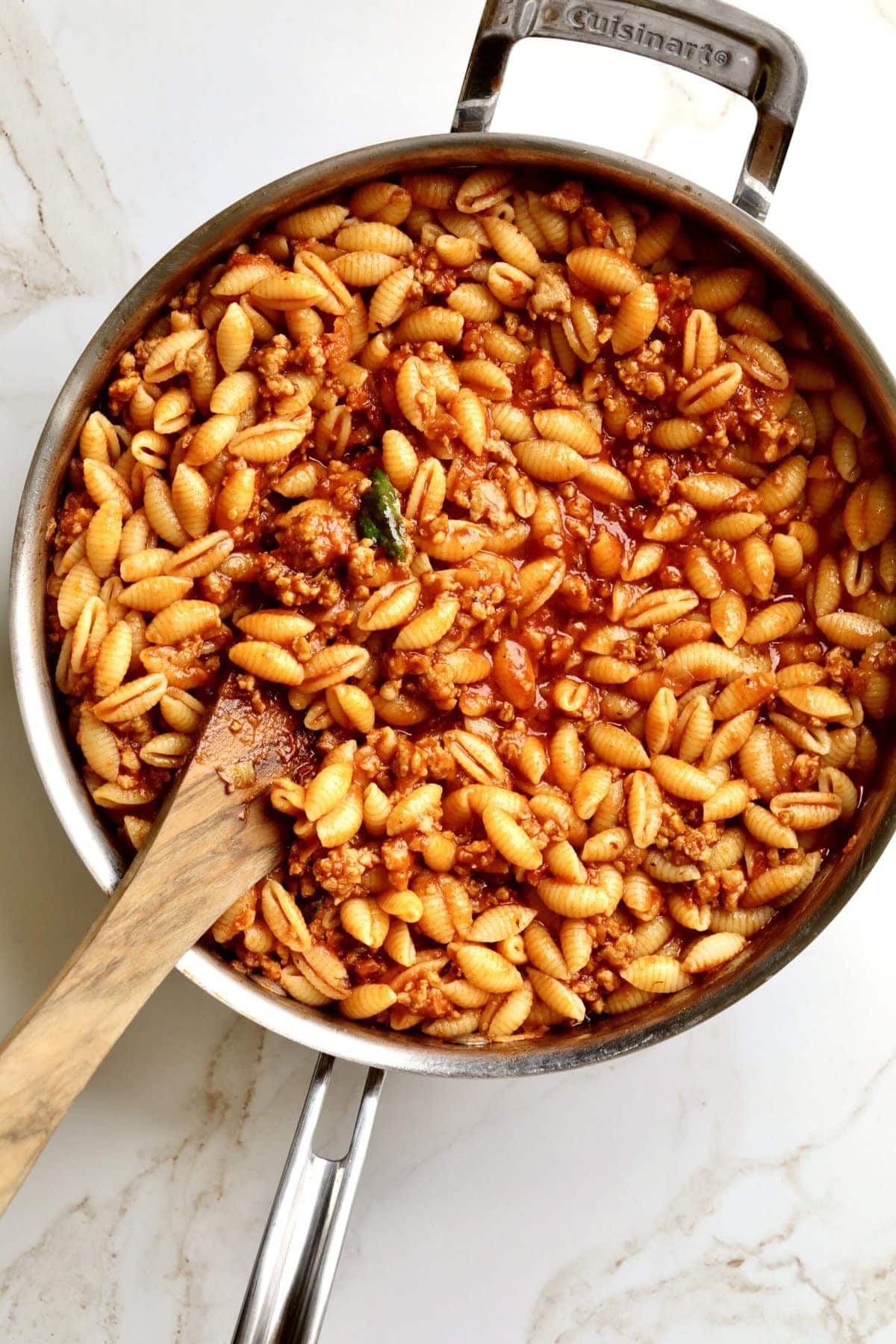
Step #5: Cook the malloredus pasta in a pot of salted water, cook pasta al dente, drain, and reserve some of the pasta water. Add your cooked pasta to the pan, and finish cooking it in the sauce.
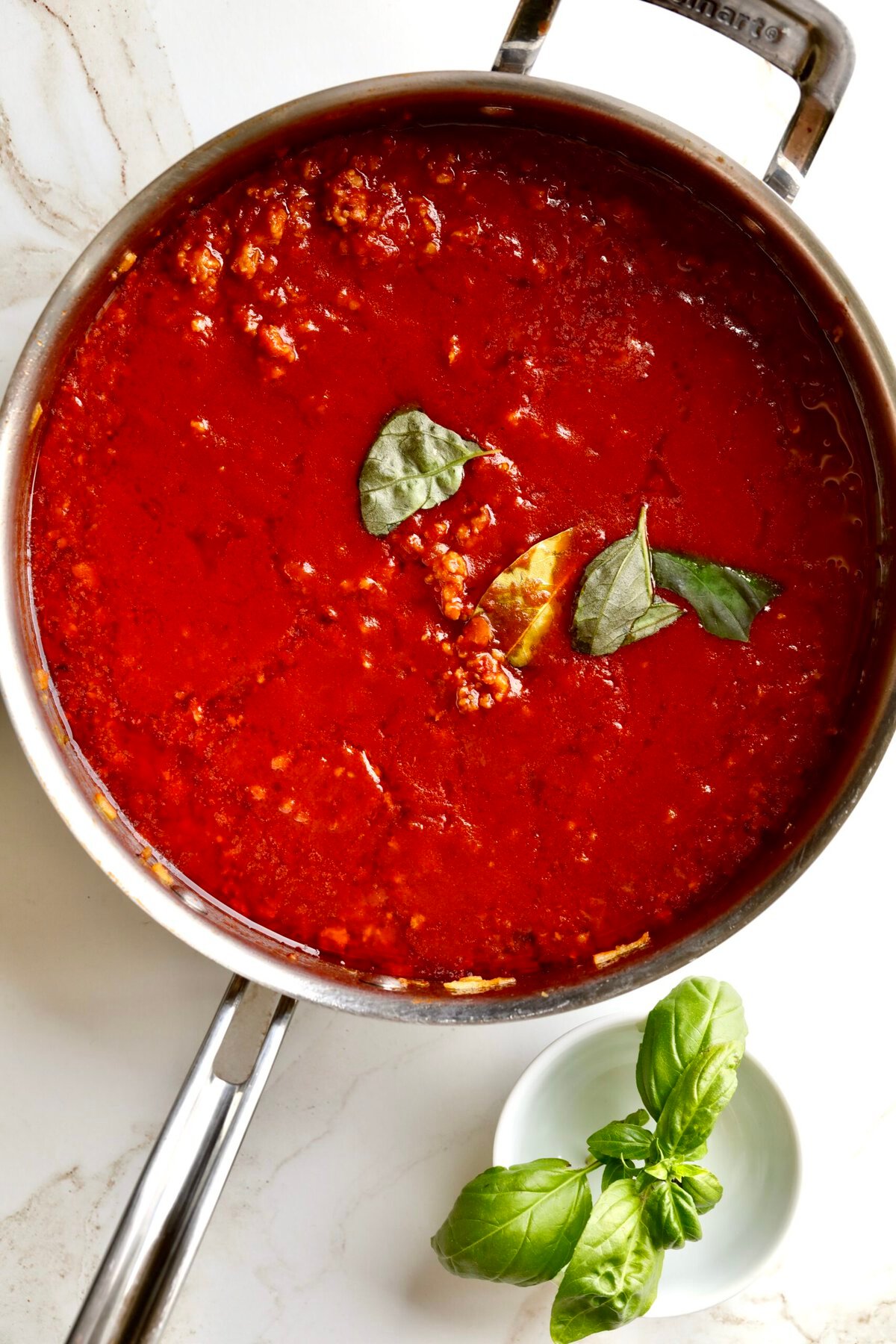
Step #4: In the last 5 minutes of cooking, add the fresh basil and stir to combine.
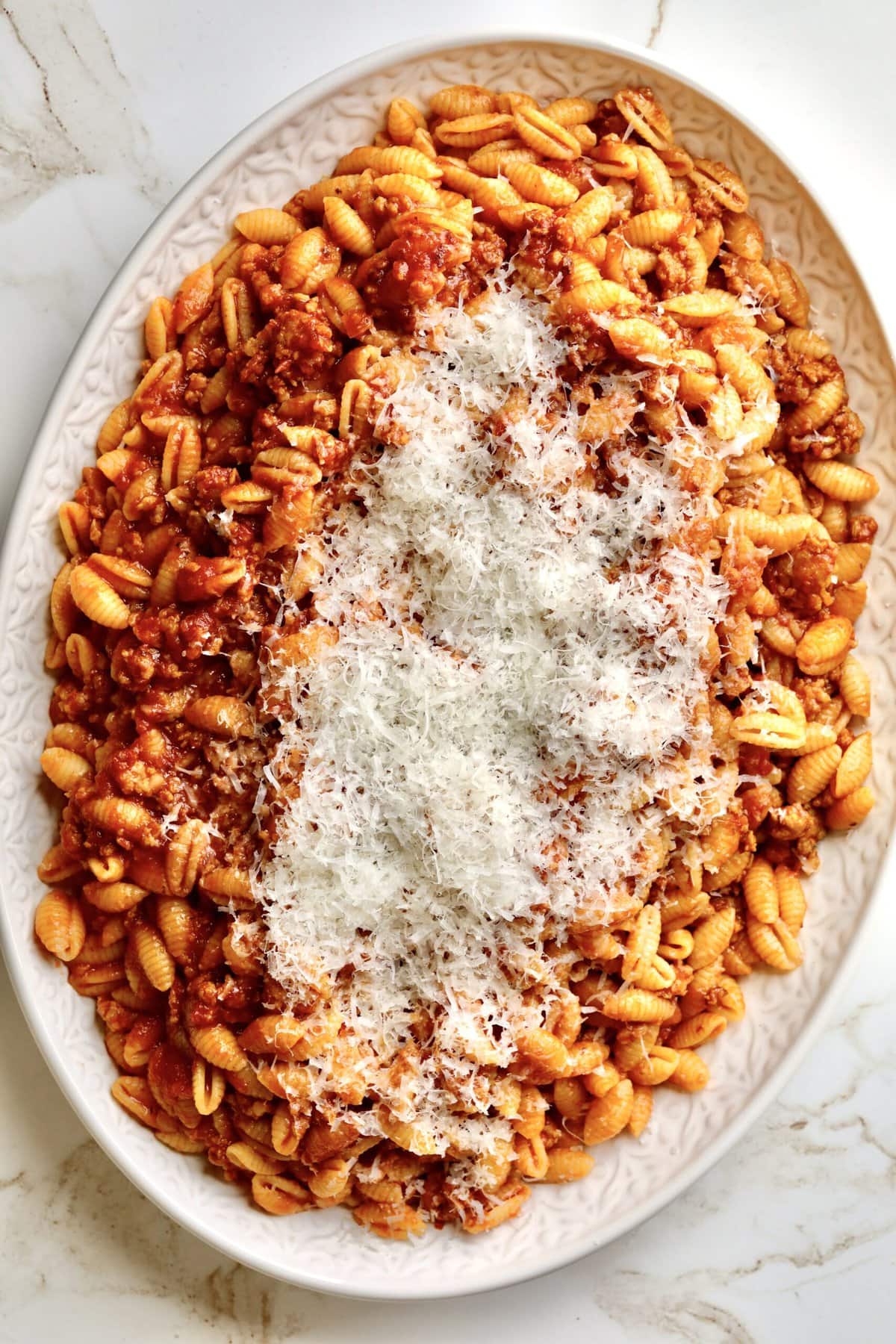
Step#6: Serve with plenty of freshly grated pecorino. Serve with- homemade focaccia bread and an orange fennel salad.
My Pro Tip
Recipe Tips
- Use malloreddus pasta for the best texture.
- Add fennel seeds if using plain sausage.
- Bloom saffron in warm water before adding.
- Simmer sauce low and slow for flavor.
- Add pasta water to bind the sauce.
- Finish with Pecorino Sardo.
- Let pasta rest a minute before serving.
FAQ’s
Boil malloreddus for 8–10 minutes, or until al dente. Check the package for exact timing as it will vary for each brand and type.
Malloreddus is a Sardinian pasta that came from the Campidano region of southern Sardinia. The name malloreddus comes from the Italian word malloru, which means “bull”. The curved shape of the pasta is said to look like a little bull’s head. The grooves in the pasta are made by pressing the pieces of dough down the tines of a fork.
Saffron is traditional and adds a unique flavor and color, but can be omitted if unavailable.
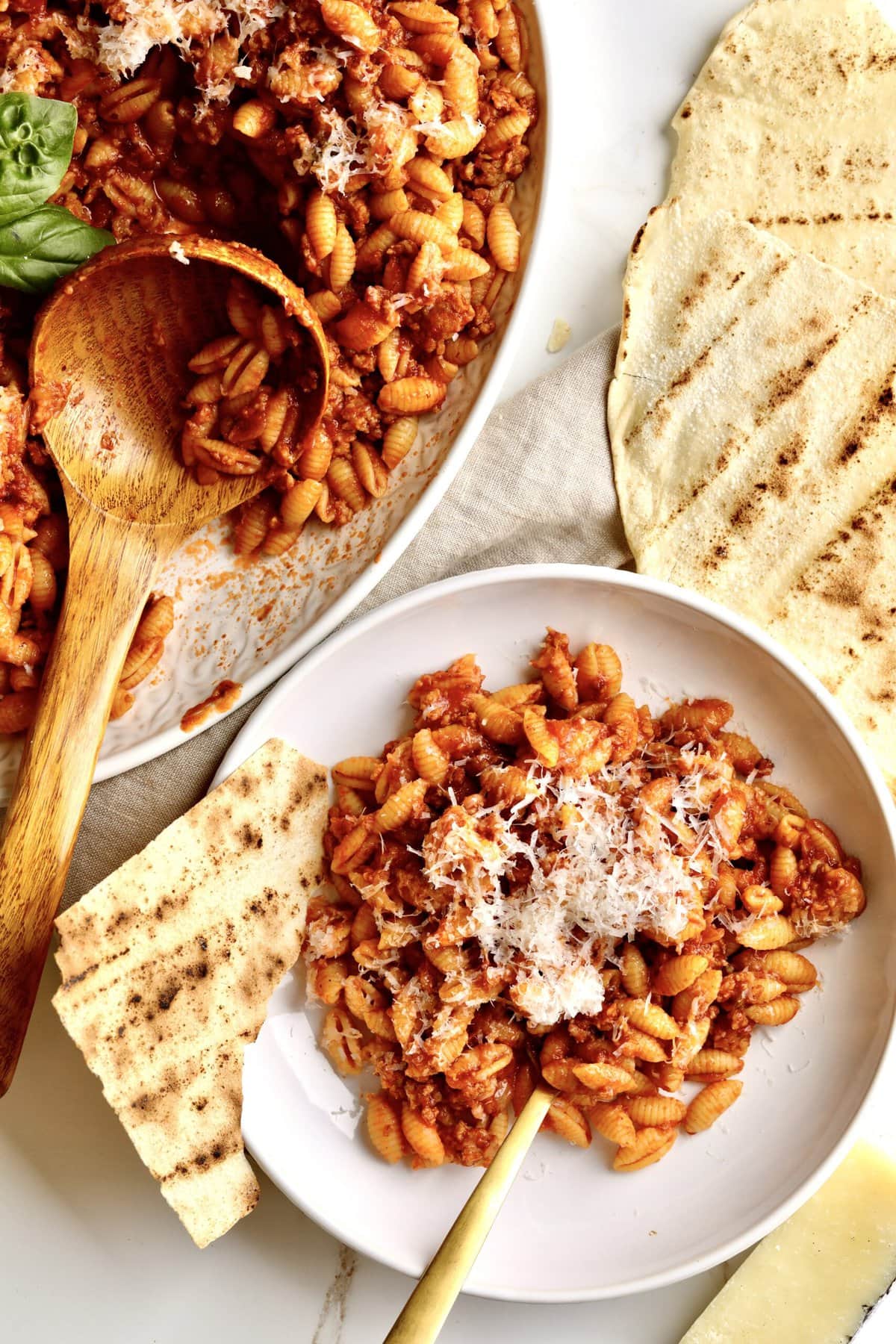
Make Ahead & Storage Instructions
- Make Ahead: Cook the sausage sauce up to 2 days in advance; reheat gently before tossing with fresh pasta.
- Storage: Store leftovers in an airtight container in the fridge for up to 3 days. Reheat on the stovetop with a splash of water.
- Freezing: Freeze just the sauce for up to 2 months. Cook fresh pasta when ready to serve.
More Italian Sausage Recipes
💙 MADE THIS RECIPE AND LOVED IT? 💙 Please leave a ⭐️STAR rating and COMMENT below- I love connecting with you! Tag me with your creations on Instagram and find me on Pinterest.
Malloreddus alla Campidanese Recipe

Ingredients
- 400 grams Sardinian Malloreddus or Gnocchetti Sardi
- 1 pound Fresh Italian sausage, ground pork sausage meat ideally with fennel seeds
- 2 tablespoons extra virgin olive oil
- ½ yellow onion, diced
- 1 bay leaf
- 1 pound-can high quality crushed tomato sauce or puree
- 5 fresh basil leaves, torn by hand
- 1 pinch ground saffron, optional
- 1 cup freshly grated pecorino sardo cheese or parmigiano cheese, for serving
- Kosher salt for pasta water
Instructions
- If using saffron- Add the saffron to a small bowl with 1 tablespoon of water. Let sit until ready to use.
- In a large saucepan or sauté pan, on medium heat, add onion, and cook in olive oil for 1-2 minutes until translucent, then add the sausage meat and bay leaf. Cook for 10 minutes breaking up the sausage and letting it brown, stirring frequently.
- Add the tomato puree and saffron (if using) to the sausage sauce. Reduce heat to medium-low and let simmer for about 20-25 minutes, stirring occasionally. In the last 5 minutes of cooking, add the fresh basil and stir to combine.
- In a large pot of boiling salted water, cook the malloreddus until al dente according to package instructions. Once cooked, drain the malloreddus, put them in the pan with the sauce, and mix until combined.
- Add grated pecorino romano cheese to the pasta and stir until it is well incorporated. Serve hot. Add additional grated cheese if desired. Buon appetito!
Notes
- Use malloreddus for best texture.
- Add fennel seeds if using plain sausage.
- Bloom saffron in warm water before adding.
- Simmer sauce low and slow for flavor.
- Add pasta water to bind sauce.
- Finish with Pecorino Sardo.
- Let pasta rest a minute before serving.
-
- Make Ahead: Cook the sausage sauce up to 2 days in advance; reheat gently before tossing with fresh pasta.
-
- Storage: Store leftovers in an airtight container in the fridge for up to 3 days. Reheat on the stovetop with a splash of water.
-
- Freezing: Freeze just the sauce for up to 2 months. Cook fresh pasta when ready to serve.
Nutrition
Nutrition information is automatically calculated, so should only be used as an approximation.

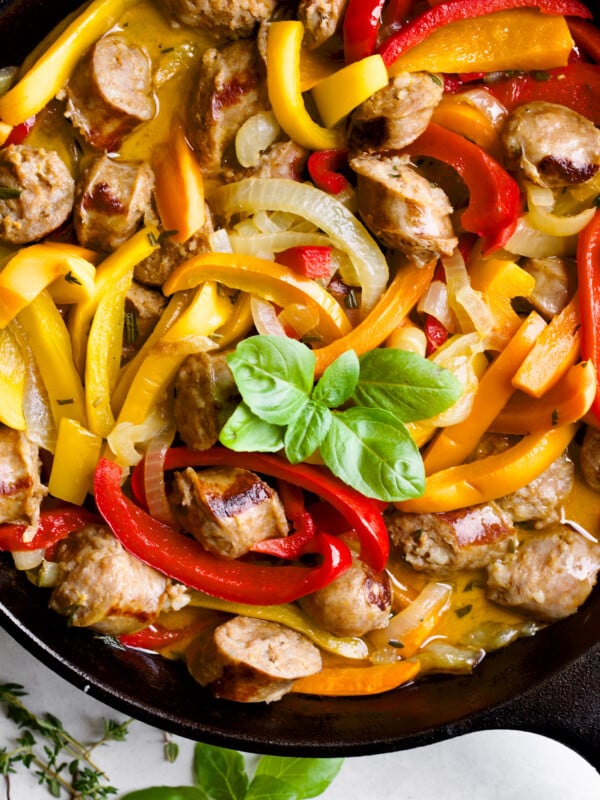
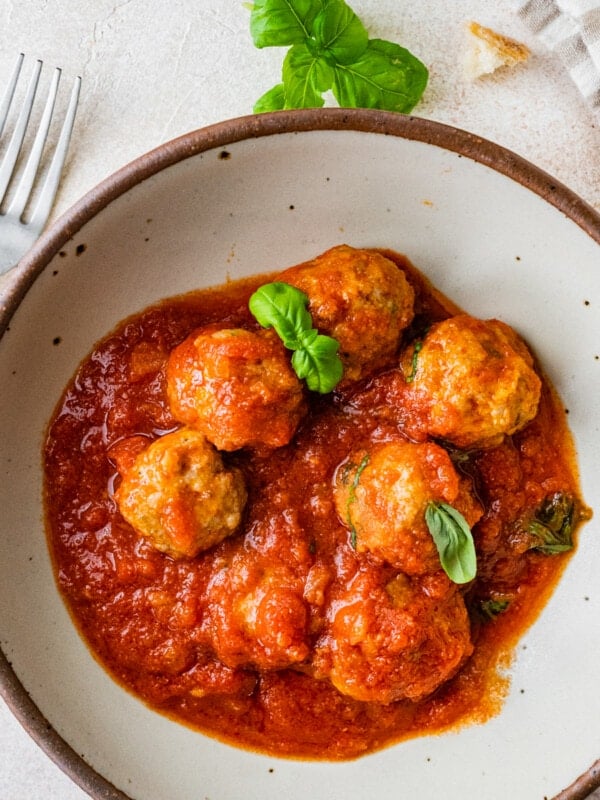
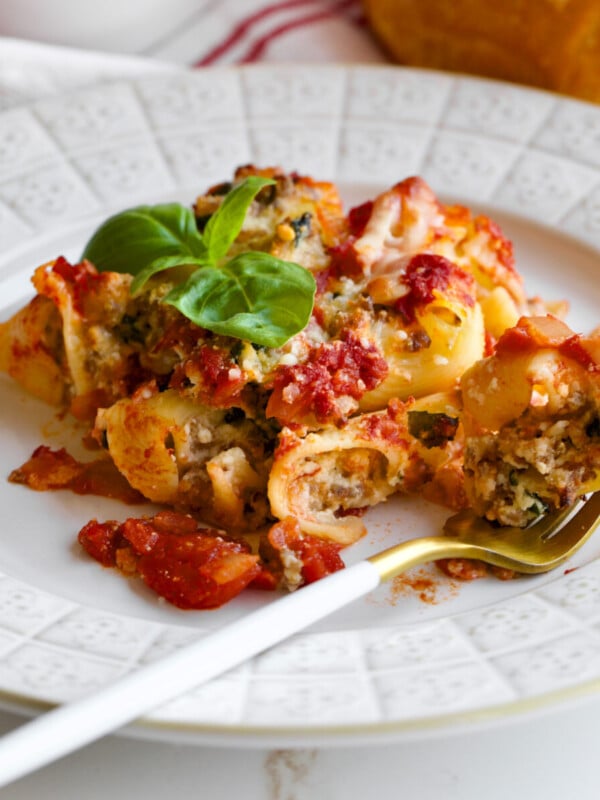
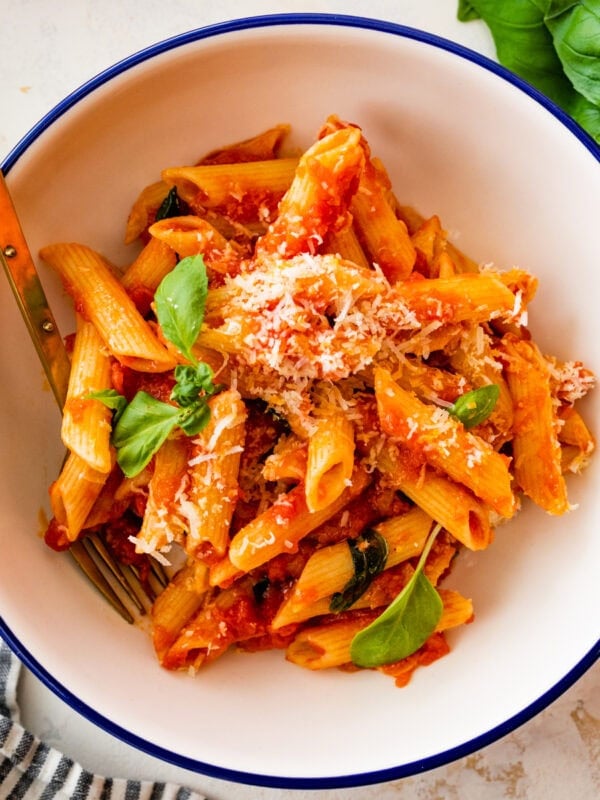
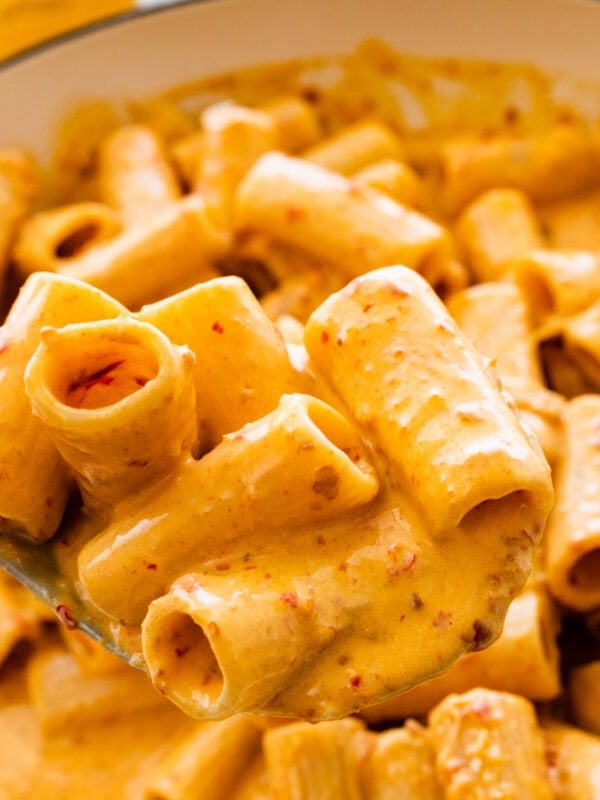
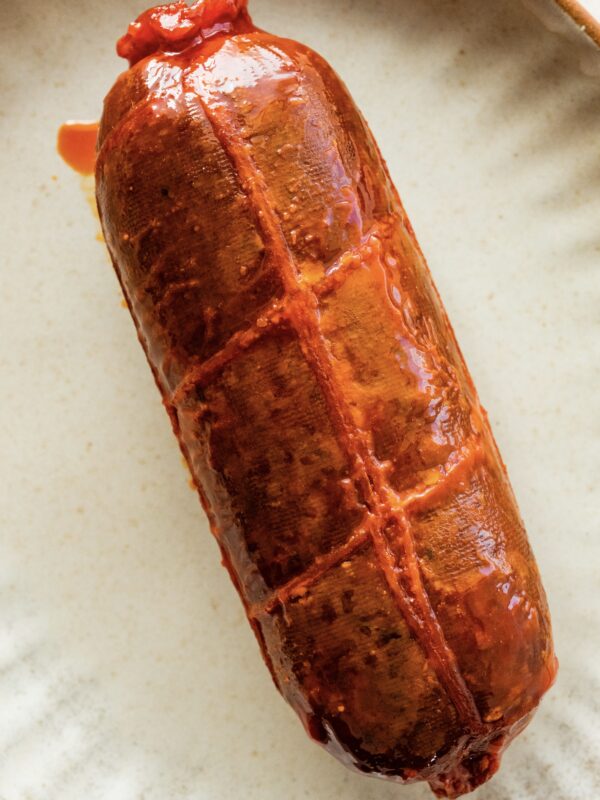
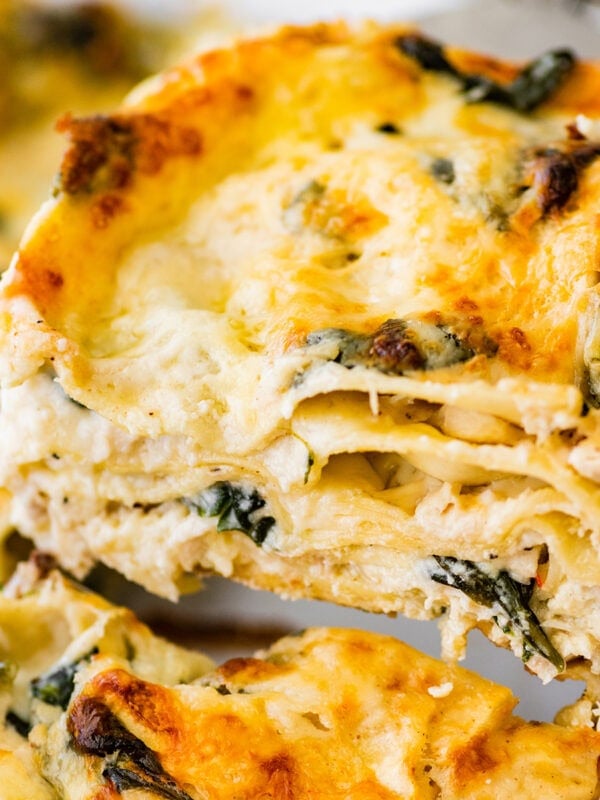




This was so good and flavorful! My whole family loved it.
Happy you loved it. It’s a comfort dish I grew up eating in Sardgena!
Absolutely amazing! Seems so simple and it’s so flavorful! My family loves this dish! Thank you for sharing!
Yes!So simple and flavorful. Happy you loved it.
This is delicious and so quick and easy – comfort food!
Happy you loved it!
This recipe was so easy to make and so good! My son said “This is delicious!” Thanks for all of your recipes and keeping our traditions and culture alive! I love the videos on instagram of your childhood home in Sardegna. So beautiful, calming and peaceful.
Hi Laura! Thank you for your sweet message. It’s my pleasure to keep these traditions alive. All the best, Elena.
simple yet exploding with flavors. what a great dinner. recipe was easy to follow and turned out delicious. will be making this again in the future.
Hi Maria! Yes, this is a classic to make again. Happy you loved it!
A taste of Sardegna! Truly, and authentic recipe.